2 Reasons Your Homemade Ice Cream is Waxy
Our favorite treat in the summer is homemade ice cream, but nothing ruins it faster than if a waxy film is left behind on your mouth and lips. Why does this happen and how can you prevent it in the future?
Generally speaking, if your homemade ice cream is waxy and leaves a film in your mouth it is from one of two things. First, there could be too much fat content (cream) in your ice cream. Second, you could have over-mixed or over-churned your ice cream so it starts turning into butter!
Read on for two simple suggestions on how to fix this problem!
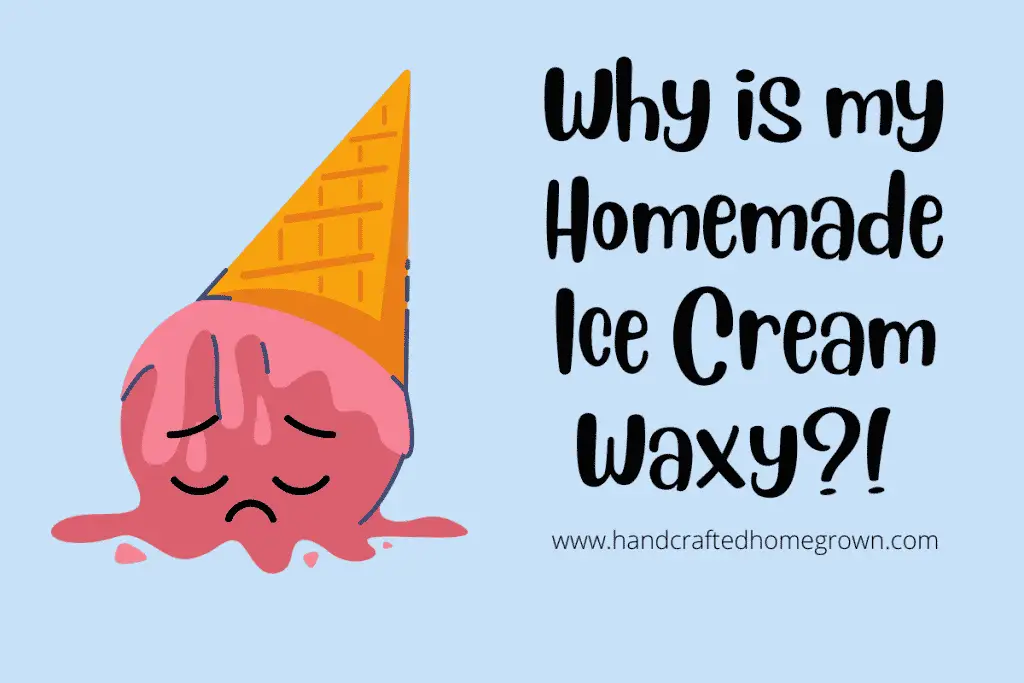
Fix 1: Trade Milk for Cream to Reduce Fat Content
The first thing you should look at to fix waxy homemade ice cream is the fat content included in your recipe. Ideally, you wouldn’t want your ice cream to go past 18%ish butterfat. So the first thing you can troubleshoot is reducing the fat in your recipe to help get rid of that filmy feeling! You can do this by reducing cream and adding milk.
However, you must be careful in making changes – as reducing too much cream and adding milk can cause your mixture to become less cream and more “icy”. It is best to follow trusted recipes before deviating too much if you’re looking for a consistent product.
So how can you tell how much butterfat is in your recipe? Well, thankfully for us, some people have created calculators for this exact purpose. I like this one from icecreamgeek.com, and although the author can’t speak to exactly how accurate this is, I think it gives you a good starting point to see where you’re at!
You might also like: Wine and Seltzer Slushies with KitchenAid
After doing a lot of research, there are a few different classifications of ice cream that I outlined below. Please note that two components go into how ice cream is classified. The first is butterfat and the second is overrun (air put into ice cream when it is made). I’m focusing on just the butterfat here because that is what impacts that waxy taste that is left behind that we’re talking about today. But just know it’s not all butterfat when classifying ice cream into these buckets! It is also about overrun – which I talk more about at the end of the article if that interests you!
Super Premium/Premium = 14 – 18% Butterfat
- Specialty ice cream shops
- Ben & Jerry’s
- Haagen-Dazs
Standard Store-Bought = 10-14% Butterfat
- These are your standard grocery store brands, things you can buy in a half-gallon in the freezer aisle
Soft Serve = 5-10% Butterfat
- Anything below 10% isn’t classified as “ice cream” according to FDA (reference is here), so they will also be referred to as soft serve, dairy dessert, etc.
- For example, Dairy Queen has about 5% according to their FAQs under “Nutrition & Products”
You might also like my: KitchenAid Chocolate Gelato – No Egg
Fix 2: Do Not Over Mix your Ice Cream
One of the main ingredients in ice cream is cream, which is also used to make butter. To make butter, you whip heavy cream until it turns into butter. So if in your process of creating your ice cream, if you whip your cream for too long – you can start to churn butter! This will result in an unpleasant waxy or filmy homemade ice cream.
So how do you avoid this problem? When making your ice cream base, don’t whip or over-mix. Generally, you just need the ingredients combined. Then make sure you’re thoroughly chilling your mixture before churning the ice cream. Make sure your ice cream bowl is frozen according to the manufacturer’s instructions. Putting your cold mixture into your cold bowl should make your churning time efficient.
Check on your ice cream after 10 minutes, and then every few minutes after that to determine if it’s done. You’re looking for a soft-serve-like texture. If you’re paying attention to your ice cream maker, you can hear the difference in the machine as the mixture thickens up. The more you churn, the more you’ll learn what the right texture is and when you’re getting close.
By reducing your mixing while making your base and your churn time, you reduce the likelihood of that cream turning into butter and leaving that waxy/filmy residue.
What is Overrun in Ice Cream?
Above, I talked about how to be classified as premium ice cream, you need a specific amount of butterfat. The other component to this is overrun. Overrun is the amount of air that is injected into the ice cream when it is being made. So if ice cream has 50% overrun, 1 quart of the base will output 1.5 quarts of finished ice cream.
The overrun in your ice cream can impact how the butterfat tastes. However, as someone who makes ice cream at home in a simple KitchenAid attachment, overrun is not something I can manage easily. It is not something I want to even try to manage. Therefore, fixing that waxy/filmy residue comes down to my milk/cream ratios and ensuring I’m not over-churning my mixture.
Wrap Up
If you liked this post, it would mean a lot if you would follow me on Facebook, Pinterest, or Instagram. If you use #handcraftedhomegrown on Instagram, I’ll be watching! 🙂
It would really help me if you pinned this post on Pinterest! Thank you!


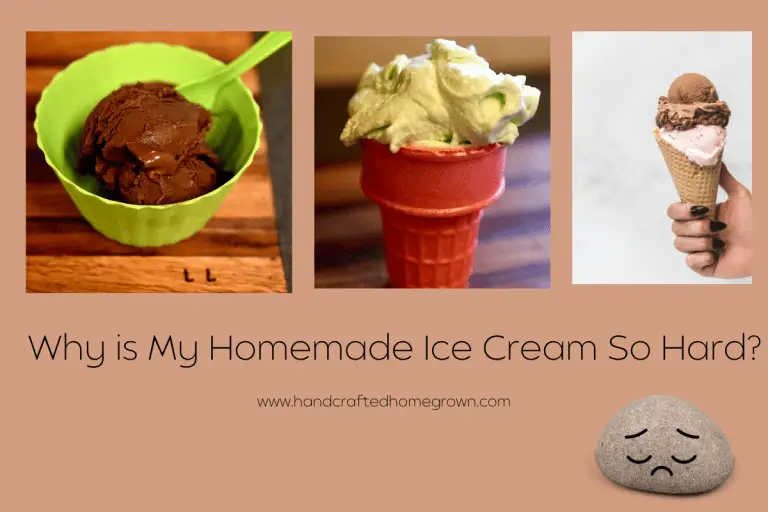
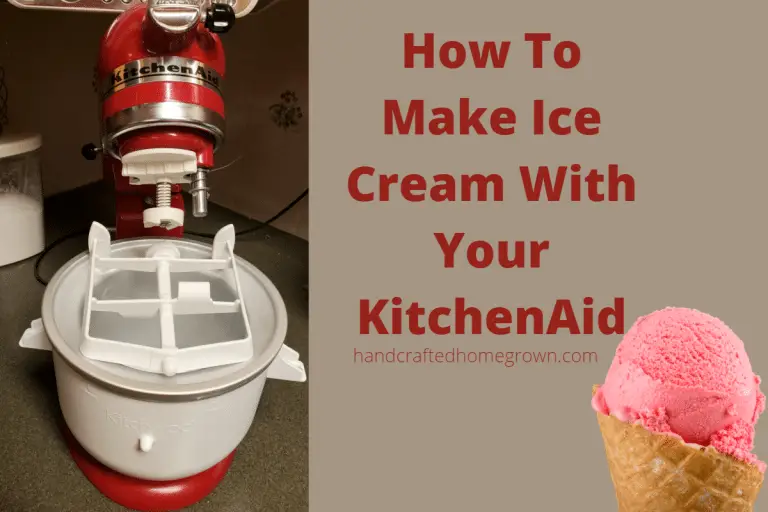
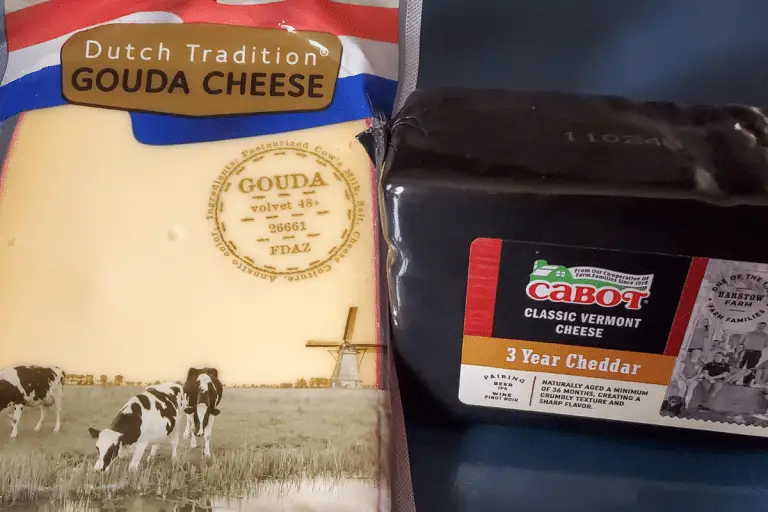

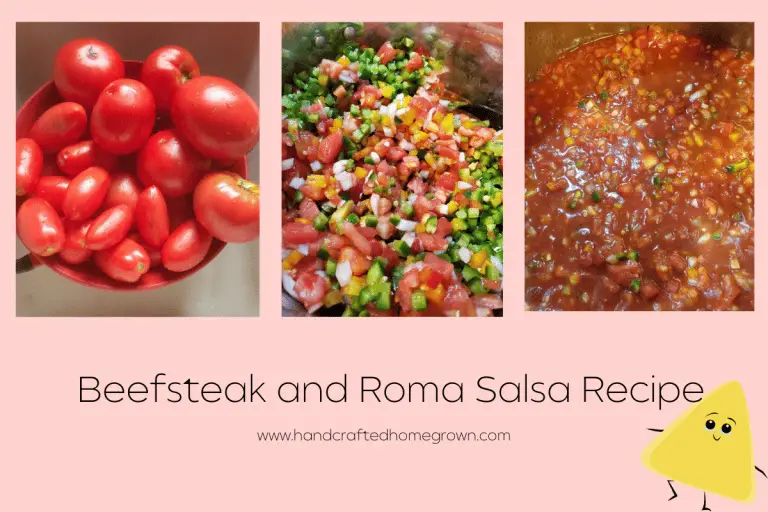
This is really going to help me. For Christmas, I made ice cream for my whole family in my ice cream maker I bought at a thrift store and – oh no! It was waxy and left a film on the mouth. I was so upset but my family still ate it. However, I will make them some more with these tips. Hopefully it’s better!
It takes some time to perfect! Enjoy!!
thanks, this article helped me understand why mine tasted too ‘fatty’
Glad to hear it was helpful! Good luck!